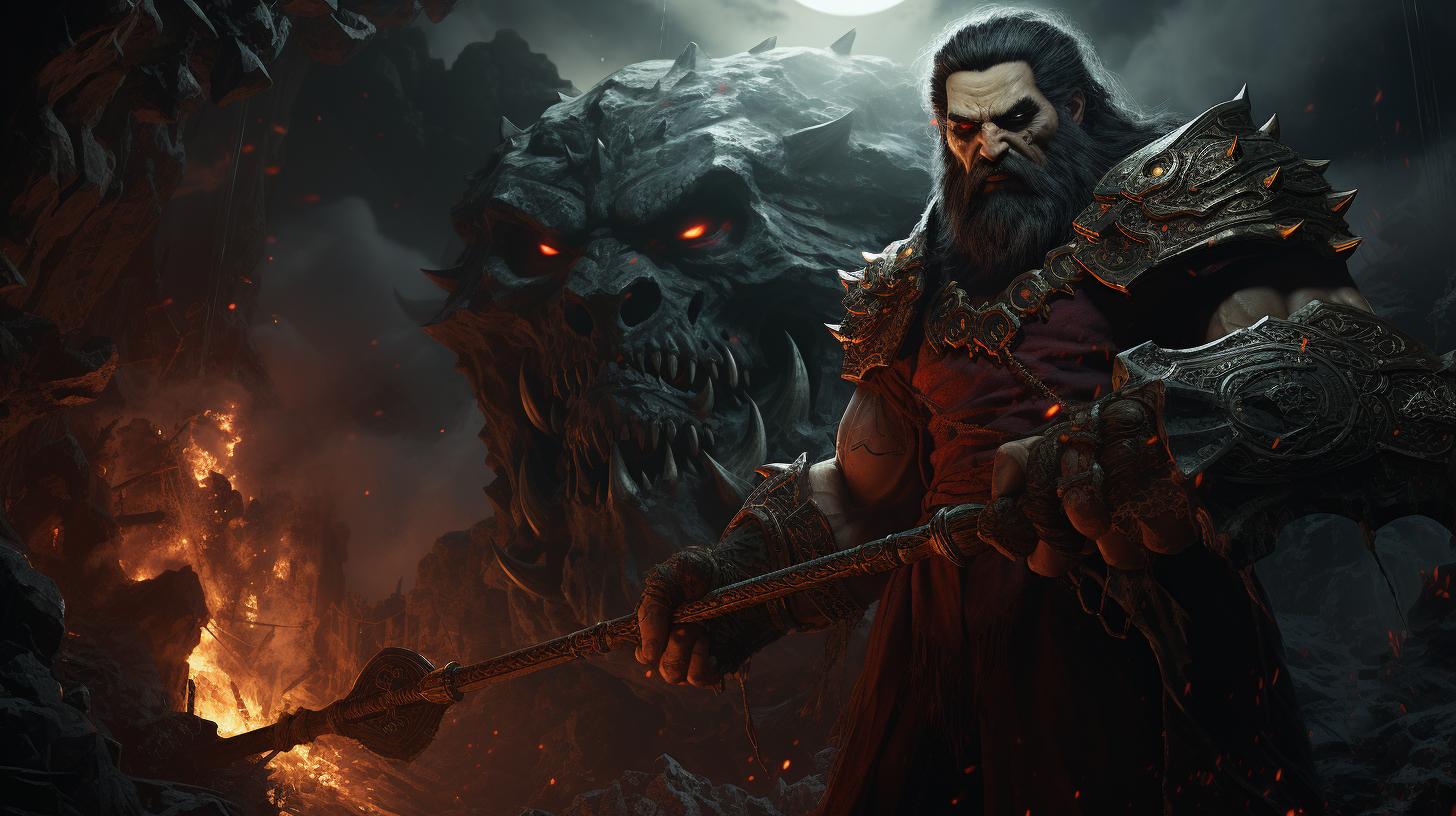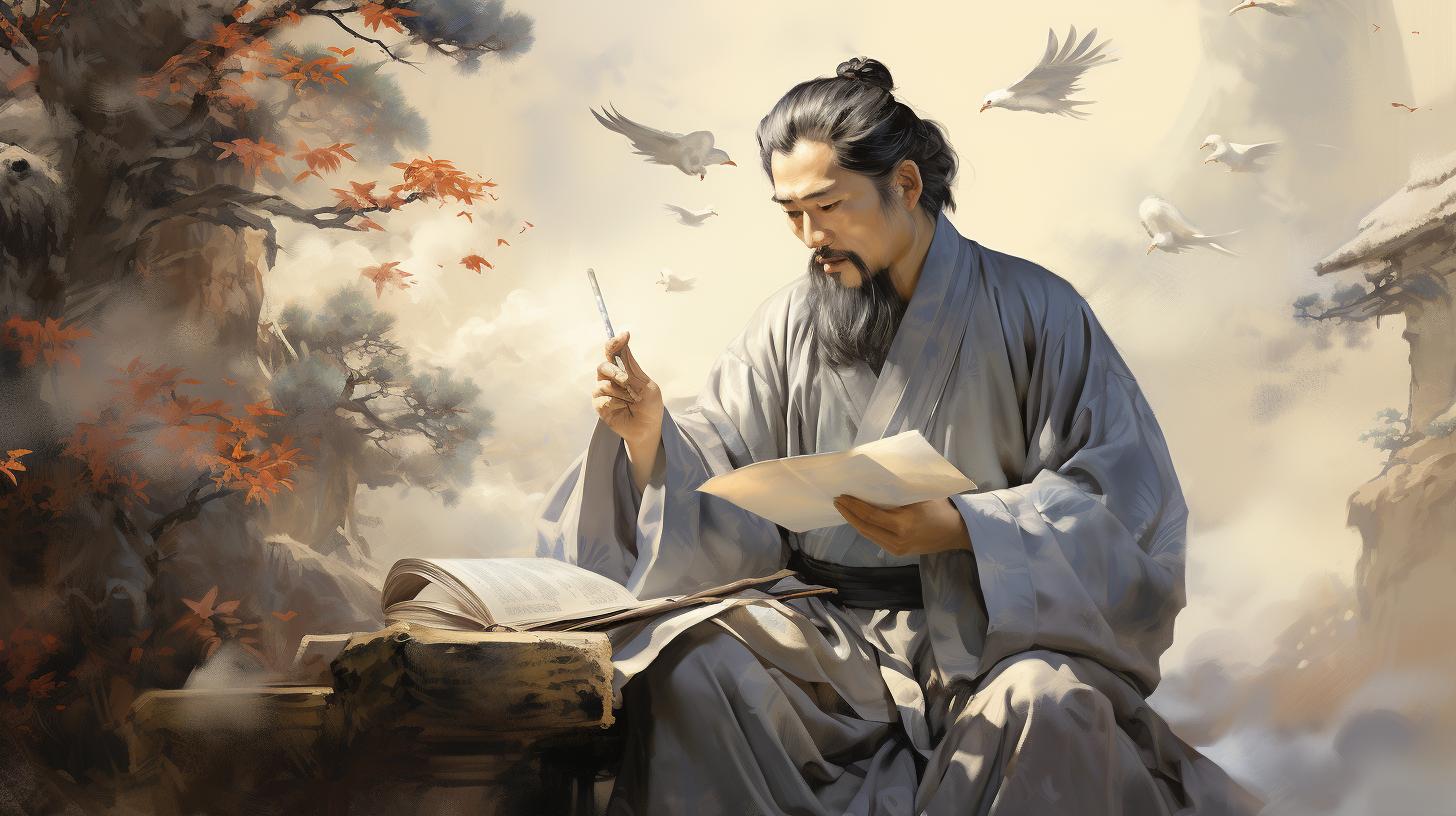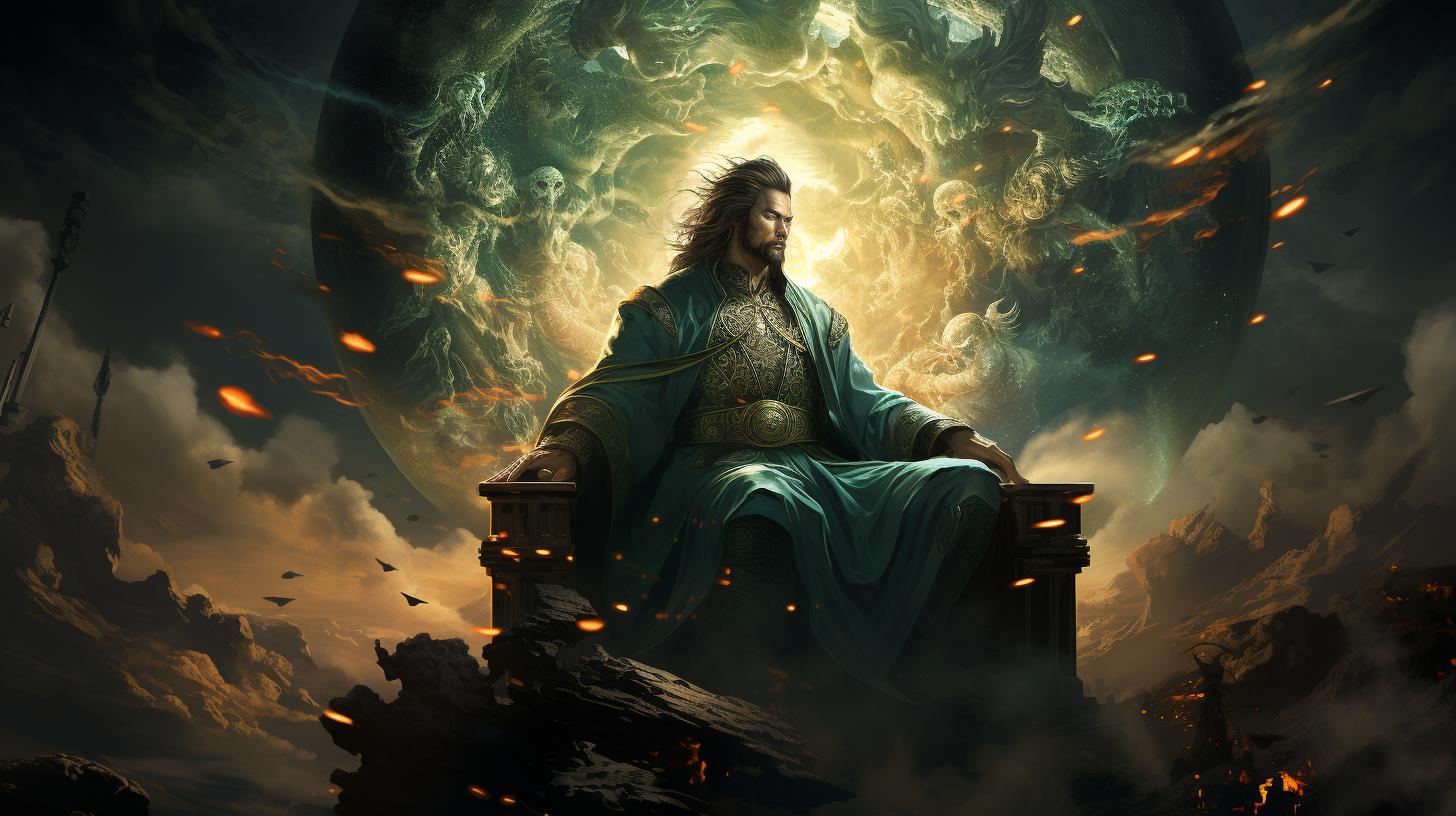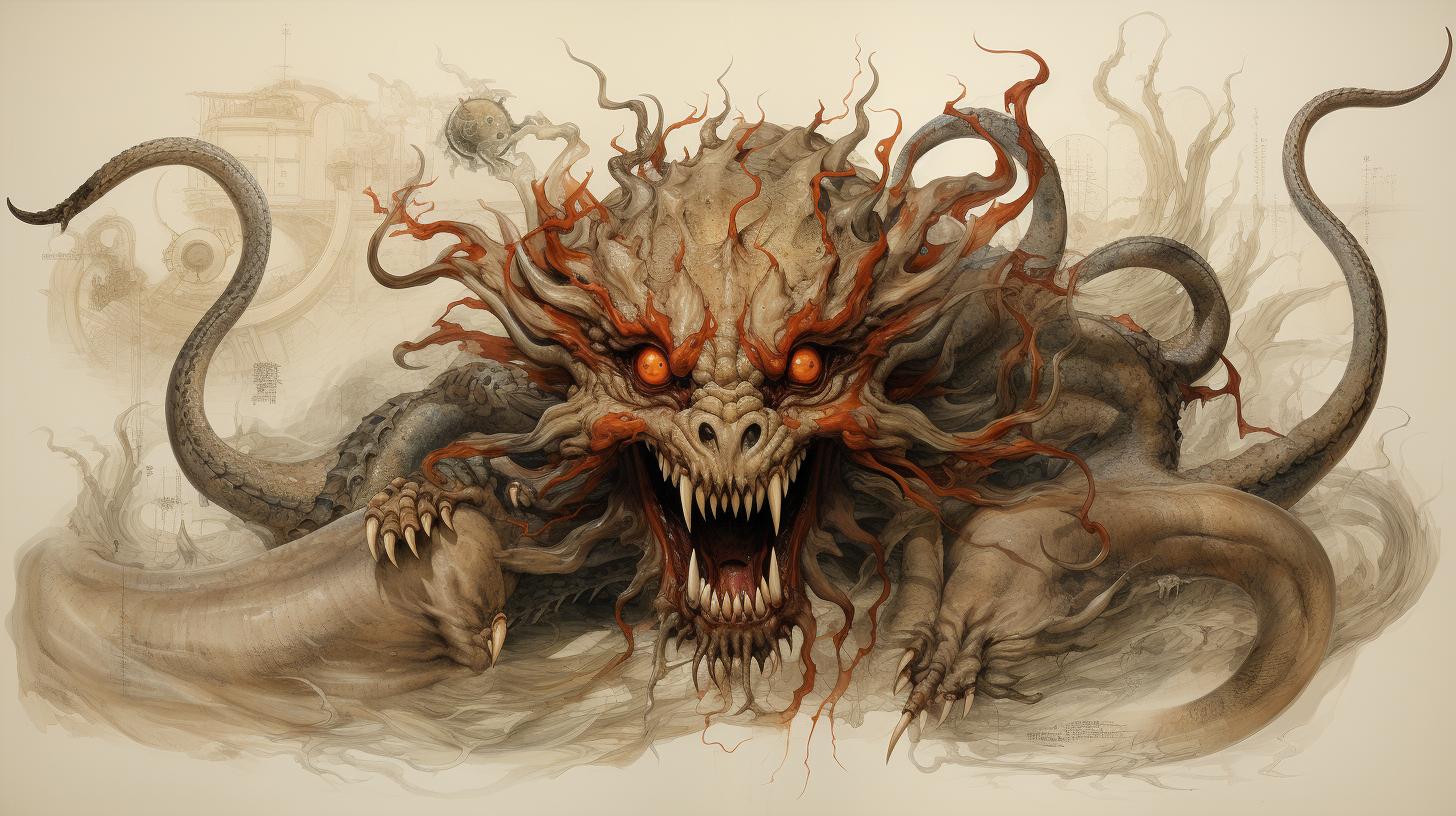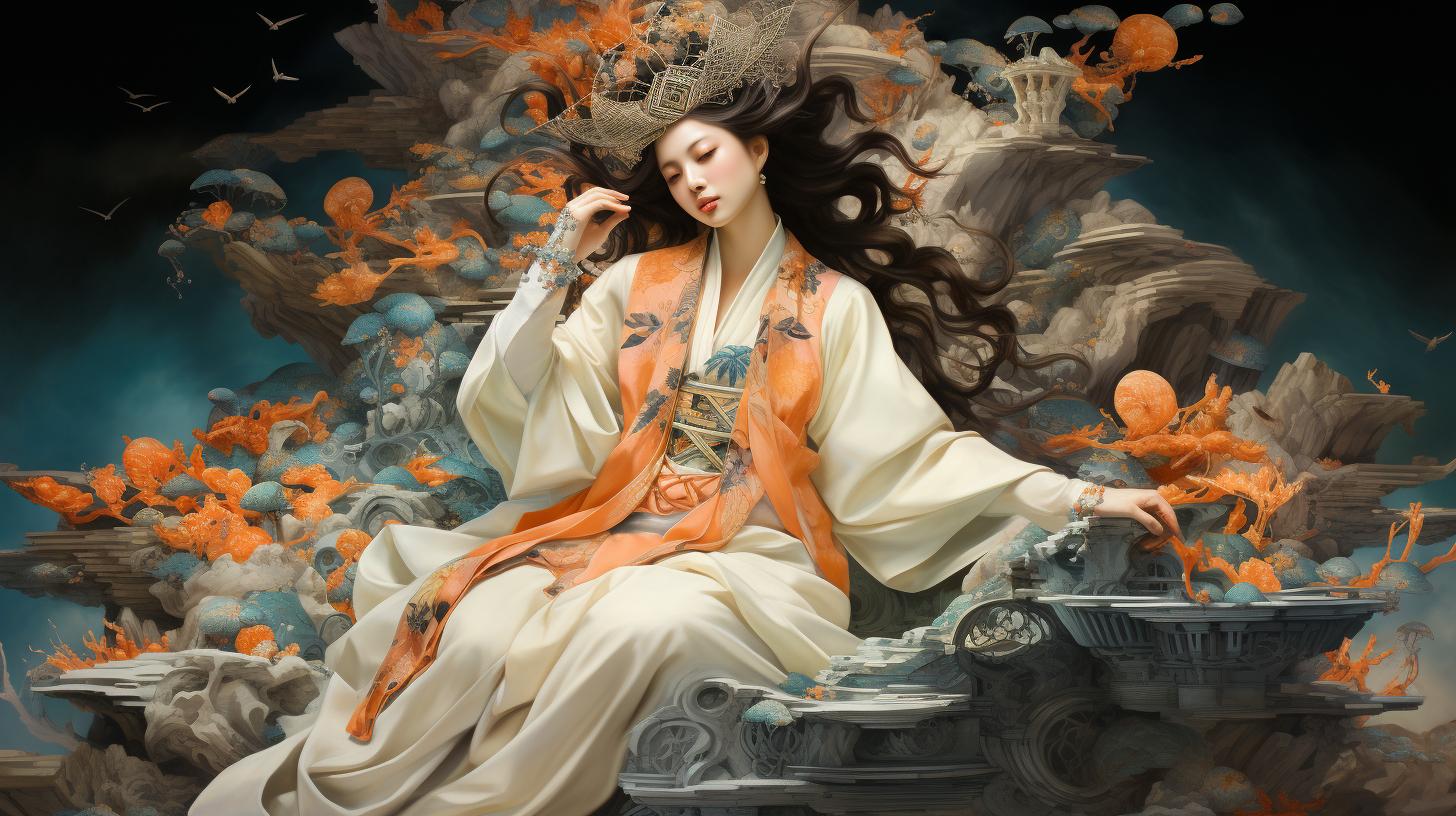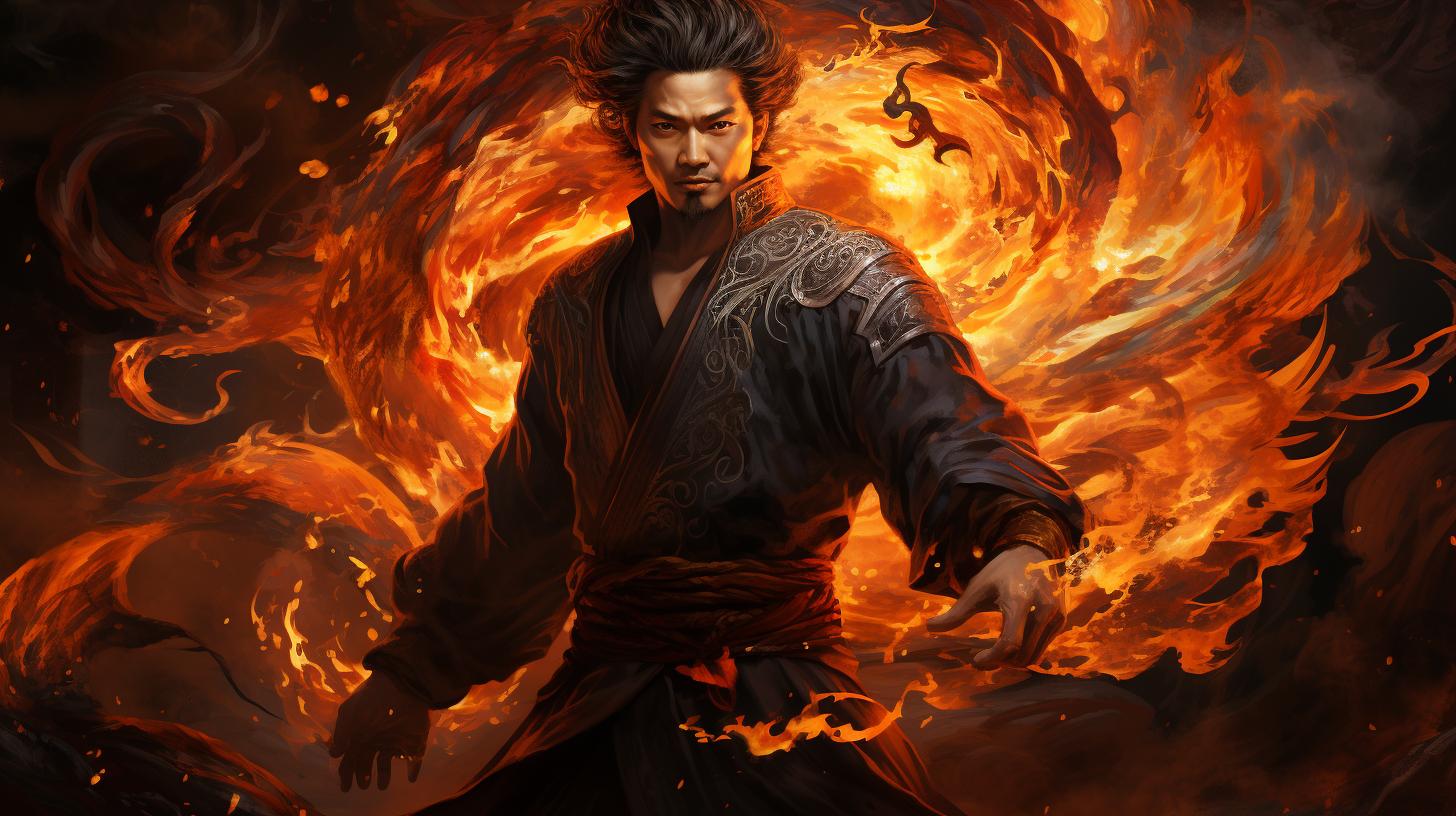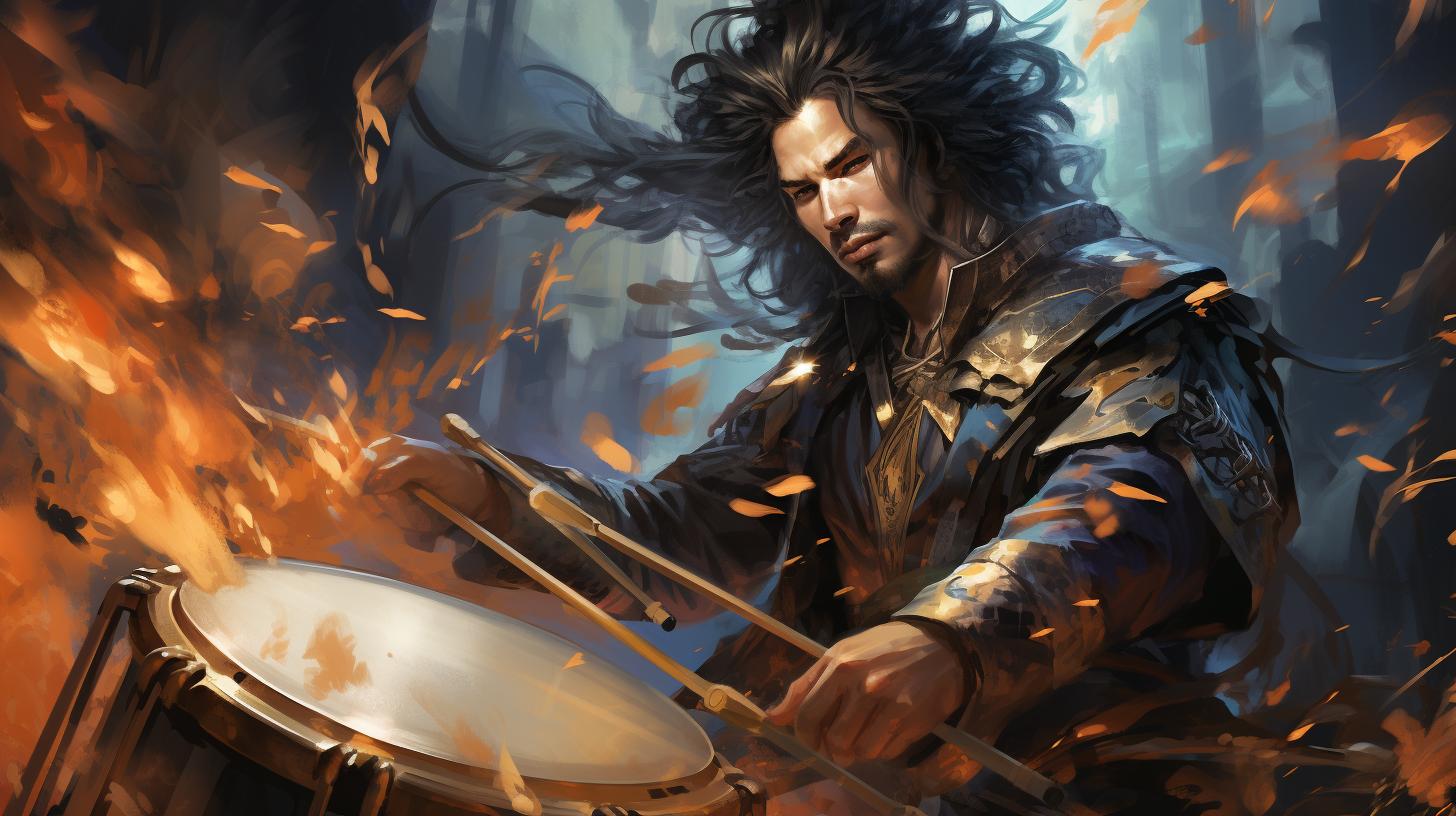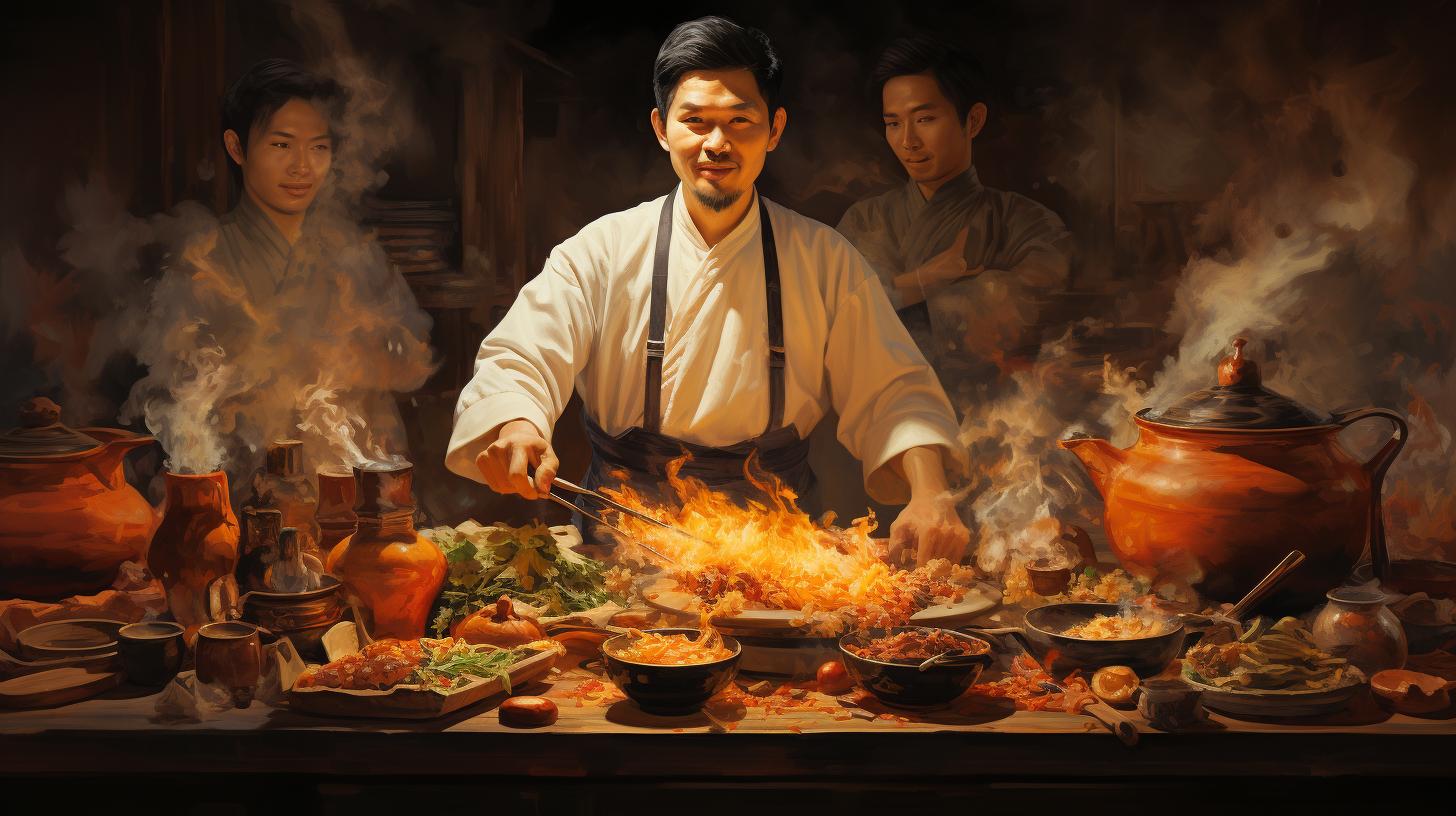Exploring the Epic Xing Tian Mythology: Unveiling the Untamed Spirit of Ancient China
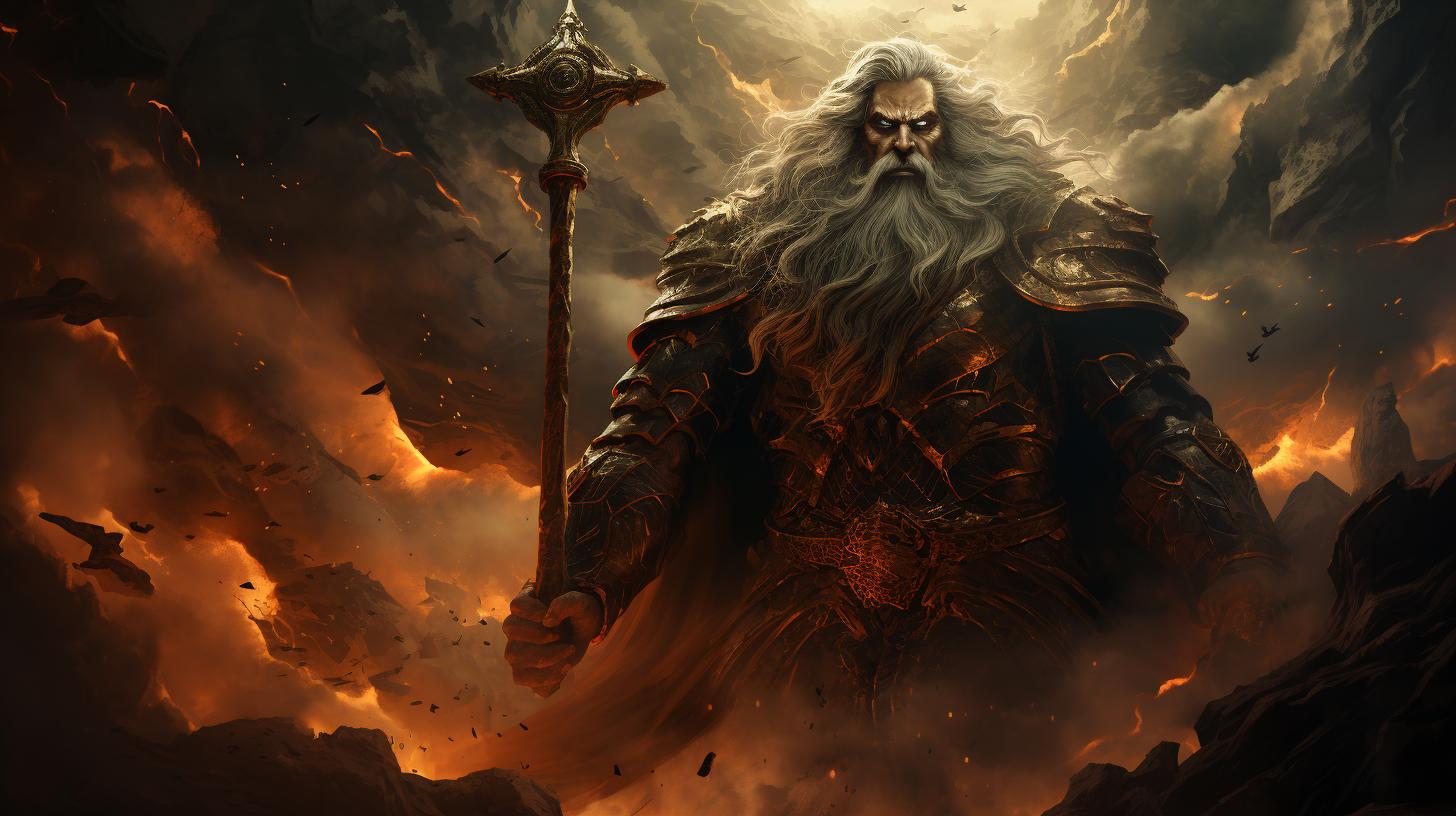
Xing Tian mythology is a fascinating part of ancient Chinese folklore. This mythical giant, once a follower of Emperor Yan, faced defeat and then challenged the mighty Emperor Huang Di to a duel.
While decapitated, Xing Tian’s indomitable spirit persisted, fighting on with eyes in his nipples and a mouth on his navel. This awe-inspiring mythological figure has since made appearances in Chinese video games and TV shows, leaving a lasting impact on popular culture.
Let’s delve into Xing Tian’s captivating legend and explore its symbolism and historical significance.
Overview of Xing Tian Mythology
Xing Tian Mythology takes us on a captivating journey into the ancient tales of Chinese folklore. This intriguing myth revolves around the legendary figure of Xing Tian, a fearsome giant known for his undying spirit and unwavering will to resist adversity.
The origins of Xing Tian trace back to his allegiance to Emperor Yan, but after Yan’s defeat in the Battle of Banquan, Xing Tian followed his master into exile in the southern lands.
It was there that he challenged the mighty Emperor Huang Di to an epic duel, leading to a fierce battle that culminated in the decapitation of Xing Tian.
However, what sets Xing Tian apart is his extraordinary resilience. Even after losing his head, he refused to surrender, continuing the fight with eyes embedded on his nipples and a mouth in place of his severed head’s absence.
This peculiar appearance symbolizes his unyielding spirit, embodying the indomitable nature of resistance against all odds.
In popular culture, Xing Tian’s mythos has resonated deeply, making appearances in Chinese video games and television shows. His legacy endures and continues to inspire courage, reminding us of the strength and determination needed to confront life’s challenges.
The Origins of Xing Tian
According to ancient Chinese mythology, Xing Tian’s origin is intertwined with his allegiance to Emperor Yan. As an ardent follower, he remained loyal even in the face of defeat. After Emperor Yan’s loss to Emperor Huang Di in the Battle of Banquan, Xing Tian chose to stand by his master and joined him in exile in the southern lands.
This decision led to a fateful encounter between Xing Tian and Emperor Huang Di. Driven by an unyielding spirit, Xing Tian challenged the victorious emperor to a duel, seeking to avenge Emperor Yan’s defeat.
The two clashed fiercely atop the Changyang Mountain, engaged in a battle that would forever etch Xing Tian’s name in Chinese mythology.
Despite his valiant efforts, Xing Tian fell in combat, his head severed by Emperor Huang Di’s decisive blow.
However, the story does not end there. Something extraordinary happened – Xing Tian’s body continued to fight, defying death itself. His severed head was buried beneath the mountain, while his headless body refused to surrender, adapting by using its nipples as eyes and its navel as a mouth.
With his unique form and unyielding will, Xing Tian has become a symbol of resilience and defiance, embodying the indomitable spirit of ancient China.
The Battle of Banquan: Xing Tian’s Defeat
In the ancient era of Chinese mythology, the Battle of Banquan marked a pivotal moment in Xing Tian’s story.
Following his exile alongside his master, Emperor Yan, Xing Tian confronted Emperor Amarillo, seeking to avenge their defeat.
With unwavering determination, Xing Tian clashed fiercely with Emperor Amarillo in an epic duel that raged all the way to Changyang Mountain.
Despite his formidable resilience, Xing Tian met his ultimate downfall as Emperor Amarillo swiftly severed his head, leaving an indelible mark on history.
However, what sets Xing Tian apart is his refusal to accept defeat.
Even without a head, his undying spirit persisted, using his nipples as eyes and his navel as a mouth. This astonishing display of resilience and unwavering resistance personifies the core essence of Xing Tian mythology.
The Battle of Banquan showcased Xing Tian’s unwavering will and unyielding determination to fight against all odds. This legendary clash set the stage for the enduring legacy of Xing Tian, inspiring generations to face adversity head-on with unmatched courage.
The Indomitable Spirit of Xing Tian
Xing Tian, the legendary giant of Chinese mythology, embodies an unwavering spirit that refuses to yield in the face of adversity. Despite his decapitation at the hands of Emperor Huang Di, Xing Tian’s undying determination carried him forward.
His ability to continue the fight, using his nipples as eyes and his navel as a mouth, showcases his unyielding resolve and resilience.
This indomitable spirit symbolizes the strength to persevere against insurmountable odds.
Xing Tian’s defiance against the Emperor Amarillo in a fierce battle that lasted until the Changyang Mountain demonstrates his unwavering commitment to his cause.
Throughout history, Xing Tian’s story has inspired countless individuals to stand firm in their convictions and never back down, no matter the challenges they face.
His tale serves as a reminder that true strength lies not in physical form but in the depths of one’s spirit.
Today, Xing Tian continues to captivate and inspire, leaving an enduring legacy of courage and resilience.
His depiction wielding an axe and shield further represents his determination to resist and protect. The story of Xing Tian serves as a timeless reminder to confront obstacles head-on, channeling the resilient spirit that lies within each of us.
Discover more about the captivating world of Xing Tian mythology and explore the profound meaning behind this legendary figure.
Xing Tian’s Unique Form: Eyes on the Nipples, Mouth on the Navel
Xing Tian’s physical appearance in mythology is as fascinating as his indomitable spirit.
After his decapitation by Emperor Huang Di, Xing Tian’s body miraculously continued to fight, defying death. In his new form, his nipples became the eyes, and his navel transformed into a menacing mouth.
This distinctive portrayal symbolizes the perseverance and resilience of Xing Tian, emphasizing that even in the face of defeat, one can find the strength to carry on. The eyes on the nipples represent his unwavering vigilance and keen senses, while the mouth on the navel signifies his relentless determination and ability to vocalize his defiance.
Artistic representations often depict Xing Tian wielding his iconic axe and shield, which further emphasize his formidable nature. This unique form serves as a powerful visual reminder of his refusal to surrender and his relentless pursuit of justice.
Through this extraordinary representation, Xing Tian’s unique form encapsulates the essence of his character and embodies the unwavering spirit of resistance, inspiring courage and determination in the face of adversity.
Xing Tian in Popular Culture: Video Games and TV Shows
Xing Tian’s captivating mythology has permeated popular culture, making appearances in various forms of entertainment such as video games and TV shows.
From digital realms to the small screen, Xing Tian continues to inspire and captivate audiences with his indomitable spirit and unique appearance.
In video games, Xing Tian often appears as a formidable character, wielding his iconic axe and shield. Players have the opportunity to embody his resilience and battle prowess, immersing themselves in his mythological world of conflict and perseverance.
Moreover, Xing Tian has stepped into the realm of television, gracing screens with his presence. Whether as a central character or a cameo appearance, his mythological essence adds an exciting element to storytelling and captivates viewers with his extraordinary form and unwavering determination.
Fans of Chinese mythology and gamers alike have been enthralled by the inclusion of Xing Tian in these forms of popular culture. It is a testament to the enduring appeal and impact of this timeless figure, further solidifying his place as a beloved character in contemporary media.
As Xing Tian’s legacy continues to unfold, we can anticipate further appearances in video games and TV shows, ensuring that his tale of resilience and courage remains ever-present in the realm of entertainment.
Exploring Xing Tian’s Symbolism and Meaning
Xing Tian, the legendary figure from Chinese mythology, embodies profound symbolism and meaning that resonate through the ages. His saga represents the unwavering determination to resist and overcome obstacles, no matter how daunting they may seem.
Xing Tian’s defiance in challenging Emperor Huang Di reflects the spirit of rebellion against oppressive forces and the pursuit of justice.
Xing Tian’s unique form, with eyes on his nipples and a mouth on his navel, carries symbolic significance. The eyes symbolize unyielding vigilance and keen perception, while the mouth represents the power of expression and communication.
Together, they emphasize the importance of both seeing clearly and speaking one’s truth in the face of adversity.
The iconic axe and shield that Xing Tian wields further contribute to the symbolic weight of his mythology. The axe represents the strength and determination to break through barriers and overcome challenges, while the shield embodies resilience and protection.
Together, they symbolize the indomitable spirit that pushes beyond limits to achieve triumph.
Xing Tian’s mythology not only reflects ancient Chinese history but also transcends time to inspire courage and resilience in the present day. His story serves as a reminder that even in the darkest moments, the human spirit can rise above and conquer.
Xing Tian’s continued presence in various forms of media serves as a testament to his enduring legacy and the timeless appeal of his inspiring tale.
Xing Tian’s Axe and Shield: Powerful Symbols of Resistance
In the realm of Xing Tian mythology, the magnificent iconography of Xing Tian’s axe and shield holds tremendous significance.
These extraordinary weapons symbolize the unwavering spirit of resistance and the determination to stand against all odds.
Xing Tian’s mighty axe represents his indomitable strength and his unyielding will to face any challenge head-on. With every swing of his weapon, he embodies the untamed spirit that refuses to succumb to defeat.
The axe, a symbol of power and courage, serves as a constant reminder of Xing Tian’s resilience and refusal to accept defeat.
In addition to the formidable axe, Xing Tian’s shield showcases his unwavering defense against adversity. The shield acts as a barrier, shielding him from the attacks of his foes.
It symbolizes his steadfastness and serves as a physical manifestation of his determination to protect and uphold his beliefs amidst the chaos.
Together, Xing Tian’s axe and shield epitomize the unbreakable spirit of resistance and the willingness to fight for what one believes in. These powerful symbols continue to inspire individuals in their own battles against the challenges they face.
They serve as a reminder that one can rise above any circumstance, standing tall with unyielding strength and resilience.
Xing Tian Mythology in Chinese History
Delving into the annals of Chinese history, Xing Tian mythology holds a significant place, representing the unwavering spirit and resilience of ancient China. Within the historical context, Xing Tian emerged as a revered deity during the reign of Emperor Huang Di, symbolizing determination in the face of adversity.
The story of Xing Tian’s epic battle with Huang Di is etched into the cultural fabric of China. It embodies the struggle for power and the relentless pursuit of victory against all odds.
Despite the defeat and decapitation inflicted upon him, Xing Tian’s legacy endured, showcasing the undying courage and unconquerable essence of the Chinese people.
Through the ages, this myth has evolved, inspiring countless generations to face challenges head-on and persevere in the face of seemingly insurmountable obstacles.
Xing Tian’s symbol of resistance, symbolized by his mighty axe and shield, has become emblematic of the unwavering spirit that defines Chinese history and culture.
Today, Xing Tian mythology continues to captivate minds and ignite the imaginations of artists, writers, and scholars.
Its enduring presence is a testament to its cultural significance and the profound impact it has had on shaping the collective consciousness of the Chinese people.
The Legacy of Xing Tian: Inspiring Courage in the Face of Adversity
As we delve into the captivating mythology of Xing Tian, we encounter a remarkable legacy that continues to inspire courage and resilience in the face of adversity. Despite being decapitated in his fierce battle against Emperor Huang Di, Xing Tian’s indomitable spirit lives on, serving as a powerful symbol of unwavering determination.
Xing Tian’s story echoes through the annals of Chinese history, reminding us of the importance of standing up against overwhelming odds. His relentless fight, even without a head, showcases the remarkable strength and unyielding willpower that lies within every individual.
- Xing Tian’s tale teaches us to never surrender, to rise again no matter how difficult the circumstances may be.
- His embodiment of unbreakable resolve and bravery serves as a beacon of hope for those facing their own battles.
- Through Xing Tian’s legend, we are encouraged to confront challenges head-on, even when they seem insurmountable.
The legacy of Xing Tian extends beyond the realms of mythology, influencing contemporary culture and media.
His presence in Chinese video games and TV shows not only entertains but also reinforces the message of fortitude and determination.
By exploring the remarkable legacy of Xing Tian, we gain a deeper understanding of the power of resilience and how it continues to shape our lives today.
Let us draw strength from his story, embracing the unwavering spirit that lies within each one of us, and embody the courage to face and overcome the adversities that life presents.
.











